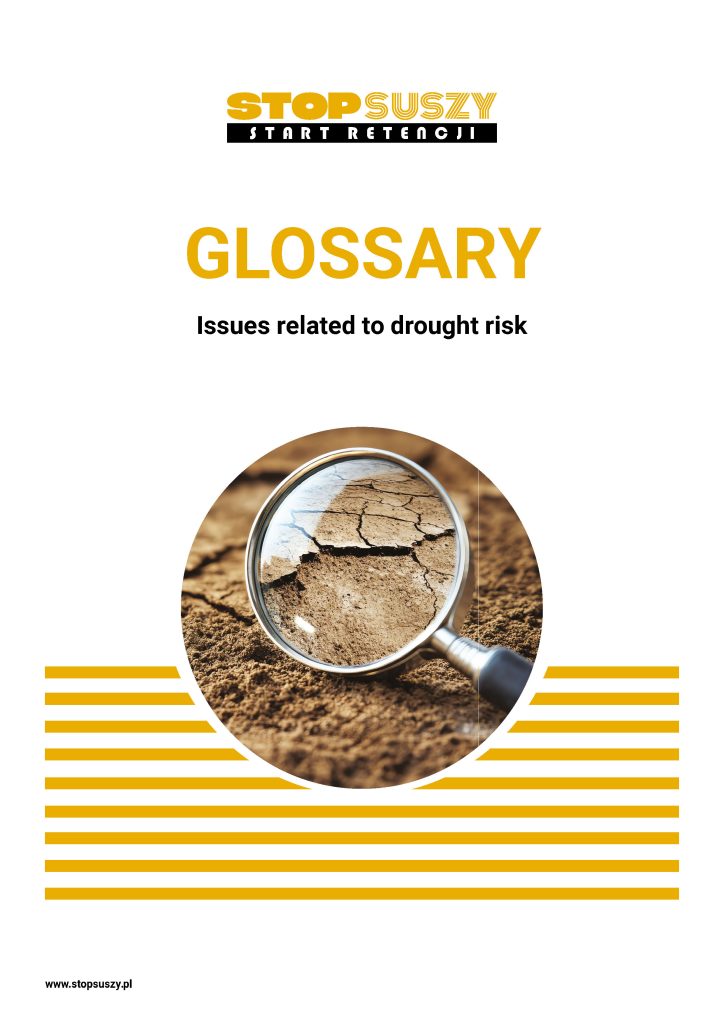Retention-Related Issues
The ability to temporarily retain water. This phenomenon improves water balance. Water resources increase as rapid surface runoff is replaced by slow groundwater runoff. Retention helps mitigate the effects of drought by increasing humidity, and it also reduces flood risk by limiting surface runoff into rivers.
Artificial retention – the process of stopping or slowing the outflow of water through human activities, which include the construction of reservoirs such as retention tanks, ponds, or dammed lakes, as well as hydraulic engineering and land improvement projects.
Natural retention – the ability of an environment to store water and slow the outflow of water naturally, without direct human intervention. This includes, among other things, the storage of water in the soil (soil retention), in vegetation (e.g., retention of rainwater in tree canopies and lower forest layers), in natural streams, wetlands, marshes and peat bogs, lakes, and in snow and ice covers.
Major retention – the collection of surface water in retention reservoirs with a capacity exceeding 5 million m³. Its primary purpose is to regulate water resources on a regional or national scale, intended for purposes such as water supply, flood control, hydropower generation, and recreational purposes.
Minor retention – the collection of water in retention reservoirs with a capacity not exceeding 5 million m³. It primarily serves to improve the water balance in local catchments, supports agriculture, mitigates the effects of drought, and can serve ecological and landscape functions.
Microretention – the retention of rainwater and surface water directly at its source, for example, through infiltration, dispersed small reservoirs, natural solutions, or blue-green infrastructure. Its purpose is to improve the local water balance, which consequently affects the water balance nationwide. Microretention solutions can be implemented on private plots as well as in urban or rural areas.
Landscape retention – the ability of a natural landscape to retain and store rainwater and meltwater. It depends on the topography, development, and use of the land.
Soil retention – the retention of water in the soil profile, i.e., in the so-called unsaturated zone, above the groundwater table. It depends not only on the type and structure of the soil, but also on the chemical composition of the soil. Soil retention plays a key role in the environmental water management, influencing soil moisture, plant development, and the water balance of ecosystems.
Groundwater retention – the retention of water in the saturated zone of an aquifer and the increase in its quantity. The size of groundwater resources depends, among other things, on the geological structure and infiltration. To increase groundwater retention, surface runoff should be limited and soil permeability increased through appropriate anti-erosion, agro- and phyto-improvement measures.
Surface water retention – a form of storing rainwater and meltwater on the ground surface by slowing runoff and inhibiting surface runoff. It is considered one of the most effective methods for improving water balance. It includes, among others, small retention reservoirs (e.g., ponds or low-head reservoirs that are environmentally friendly), wetlands, and polders.
Urban retention – refers to the ability of cities (infrastructure) to retain and store rainwater and meltwater to prevent rapid runoff into the sewer system. This is achieved through the use of blue-green infrastructure, including green roofs, green tracks, rain gardens, permeable surfaces (parking lots), and absorbent ditches and infiltration basins. The goal is to improve water balance, limit the effects of drought, improve the microclimate, and reduce the congestion of sewage systems.
Managed retention – the ability to store water in reservoirs (natural or artificial) equipped with regulating devices (e.g., dams, weirs, culverts) that control water level and outflow. It primarily enables the mitigation of drought effects through water resource accumulation, as well as flood protection through controlled damming and discharge, the supply of drinking and industrial water, the development of hydropower, and the maintenance of navigation.
Unmanaged retention – the process of water storage occurring without direct human intervention, within naturally functioning environmental elements such as forests, wetlands, or floodplains. It is characterized by short-term, irregular, and difficult-to-quantify evenness of river flows.
The ability of the environment to temporarily retain precipitation in the form of snow and long-term storage of water in the form of ice. Snow and ice remain on the ground surface and do not participate in the water cycle until they melt. This process plays a vital role in water balance – the gradual release of water as snow and ice melts feeds rivers, lakes and groundwater, helping to maintain flows during periods of low rainfall.
DOWNLOADS:





 PL
PL


